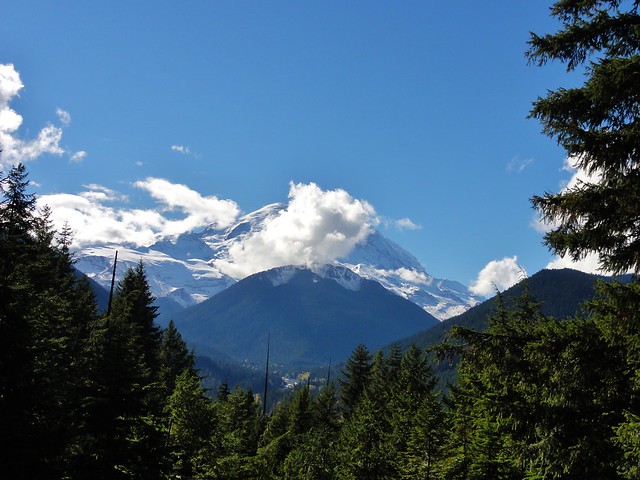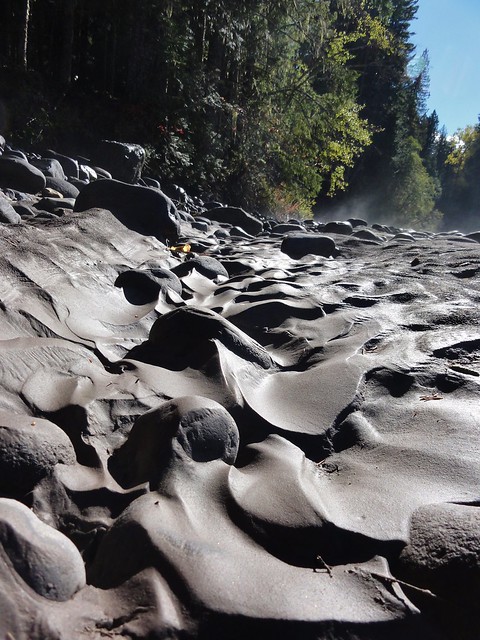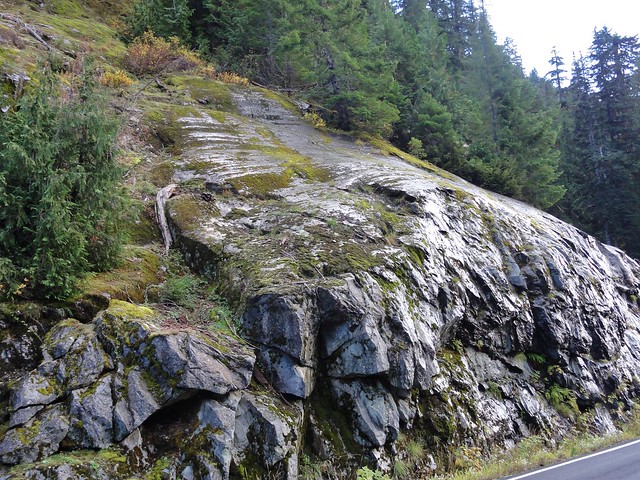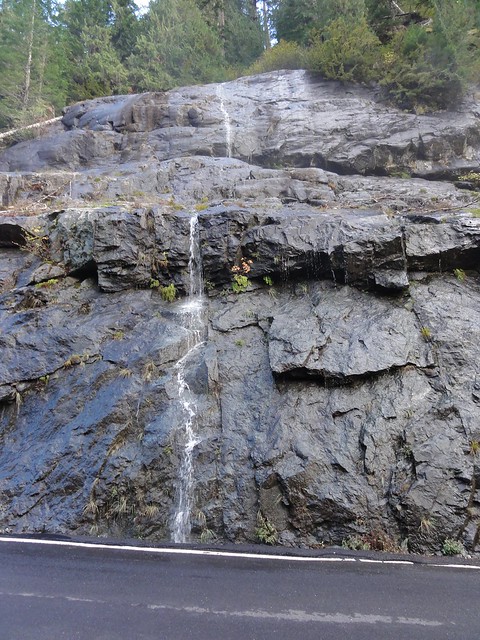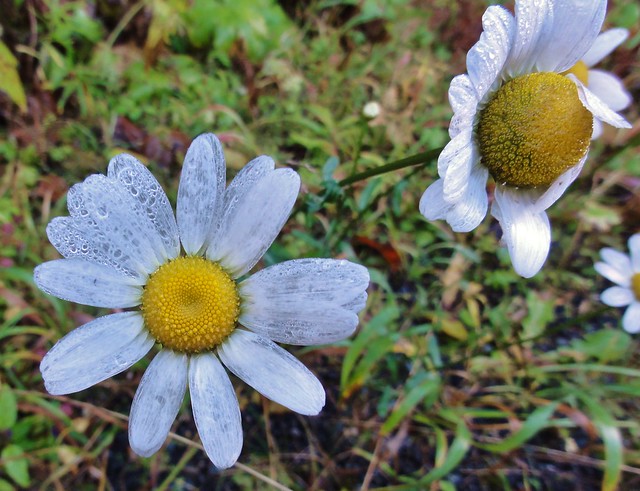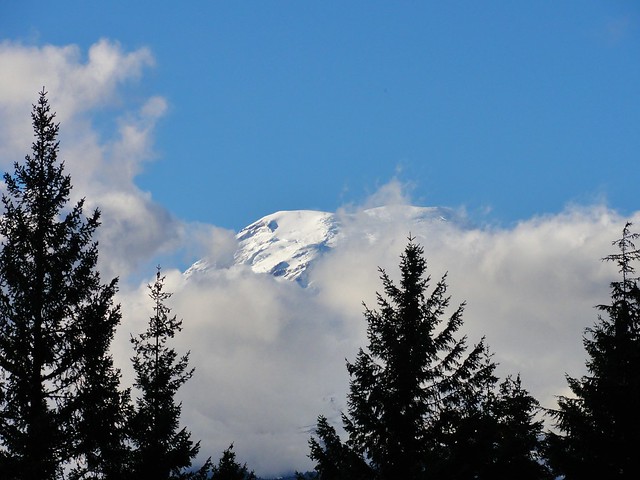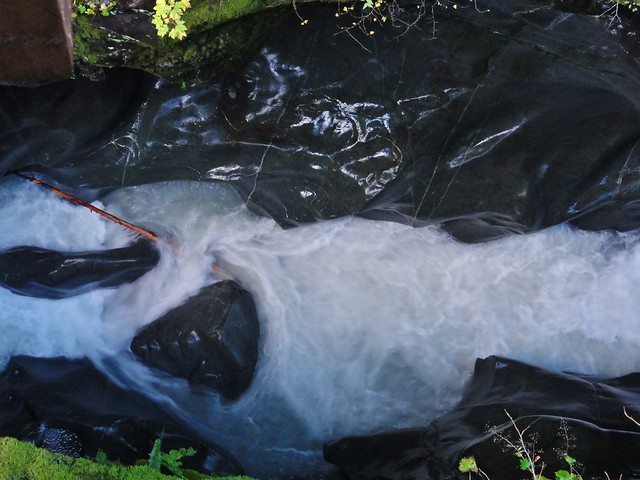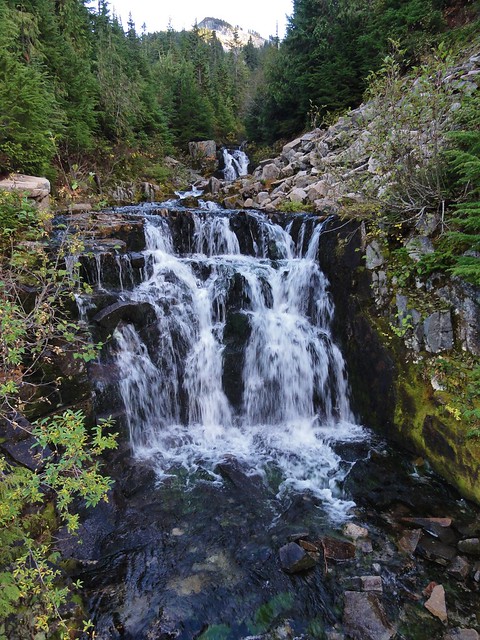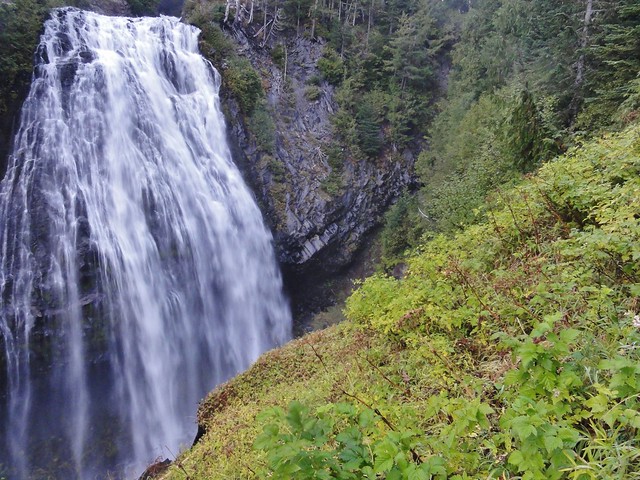This article was published in Scientific American’s former blog network and reflects the views of the author, not necessarily those of Scientific American
My dear delights, I'm sure you've been waiting with breathless anticipation for the results of our adventures of last week. I took our own Lousy Canuck over the mountains and through the woods, because when you get a sun break in some very stormy October weather while a Canadian is visiting, you damned well show them all the volcanoes you can reach.
It's a bit fraught at this time of year, with some visitors centers closing unexpectedly and roads shut down. We didn't get to see as much of Rainier as I would have liked. But we got a bit in. The volcano was even somewhat visible!
On supporting science journalism
If you're enjoying this article, consider supporting our award-winning journalism by subscribing. By purchasing a subscription you are helping to ensure the future of impactful stories about the discoveries and ideas shaping our world today.
I was quite glad, because I had a before-and-after story to tell about Mount St. Helens. Mount Rainier does a pretty good job of being the before.
We went and played in the White River. Recent high water had left utterly delightful patterns in the river bed.
The morning's fog wasn't quite finished lifting - you can see the steam rising from the river bed in the distance.
I'd intended to go over to Longmire, because it's a lovely drive with hot springs at the end, but they were working on the tunnel on Highway 123. We tried changing plans and going up to Sunrise instead, but Sunrise was closed. We went back to the tunnel and were fortunate to arrive just as they were letting traffic through. And it turns out that being there late in the season, combined with half the road being closed and traffic only intermittently being allowed through, gave us an opportunity to do something really neat. We got to stop and inspect this gorgeous example of a roche moutonnée along the road. It would have been far too dangerous with normal traffic.
You'll definitely want to click for a larger view of this one. It's so tasty!
It had been raining all weekend, so there were plenty of little ephemeral cascades. There was an absolutely marvelous one flowing down our beautiful glacial feature.
How wonderful is that?
We also got to see some late daisies, valiantly clinging to life.
We could have gone to Ohanapecosh Hot Springs, but I decided to take us over Stevens Canyon Road and make it to Box Canyon before it got too dark. We got a rather pretty view of Mount Rainier from the large pullout not far from the Grove of the Patriarchs.
Alas, that would be our last view of the mountain. The clouds were gathering. Happily, there's still plenty to see when it's cloudy up there. Such as the alien face in Box Canyon.
Jason was suitably impressed by the canyon. Pretty much everyone is suitably impressed. It's an impressive spot, and it was reallAlien!y nice to make it there before dusk for once!
We headed over the mountain, and passed the reflecting lakes. They weren't reflecting much. But we did get to stop and wander about and take photos of some of the pretties, like this waterfall on Sunbeam Creek.
Paradise was pretty much covered in clouds, and there weren't any spectacular views. We got some pretty late-evening sunshine lighting up the clouds. Then we made it to Narada Falls just before we lost the light.
And then we'd pretty much lost the light, so that was all of Rainier I got to show him. Still. I think we managed pretty well.
But Mount St. Helens the next day will blow your mind. Stay tuned!
